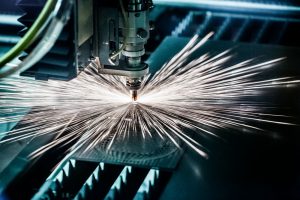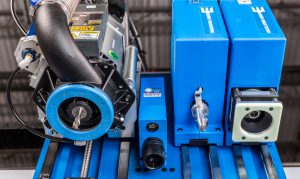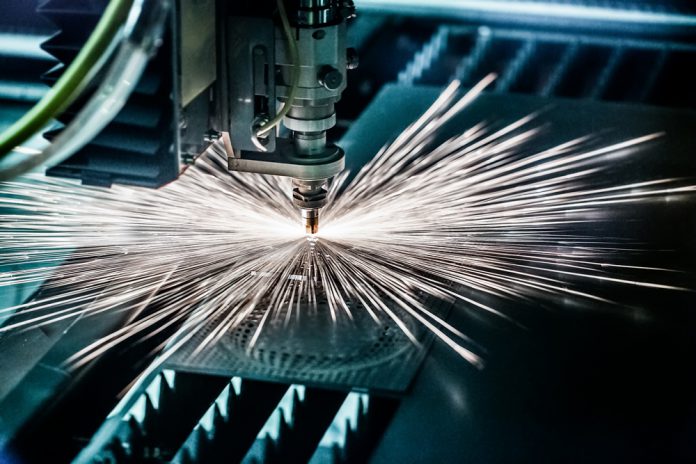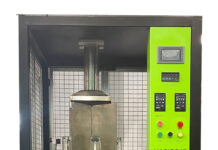 Simply stated, when it comes to CNC control technology, open architecture refers to a system that is not closed—one that can operate utilizing CAD-CAM programming that comes from a variety of sources. It also means assorted pieces of hardware (like a variety of tooling) can be used, depending on what type of materials need to be cut with a knife or router.
Simply stated, when it comes to CNC control technology, open architecture refers to a system that is not closed—one that can operate utilizing CAD-CAM programming that comes from a variety of sources. It also means assorted pieces of hardware (like a variety of tooling) can be used, depending on what type of materials need to be cut with a knife or router.
In a CNC system, open architecture provides for future modifications and upgrades to meet the needs of end-users as their businesses and customer bases evolve.
Proprietary technology, on the other hand, is often limited to one specific programming language. As a result, the option of switching to newer and possibly more productive programming systems may not be available, which makes the CNC system more costly in the long run, especially if additional equipment must be brought in to handle expanding needs.
In terms of CNC router control systems, the functionality most companies seek is, for lack of a better term, “future proof.” That is, it is a system that can be upgraded by the manufacturer of the equipment to take advantage of continuous advances in technology and to satisfy growing customer needs.
Not surprisingly, industry trends indicate that open architecture is becoming more popular as CNC customers look for increased flexibility and versatility in their systems.
As a result, there are fewer closed proprietary CNC systems in use now than there were just a decade ago, as more end-users make the move to open architecture.
Open Architecture Essentials
Open architecture features accept machine programs from a wide variety of software packages, which can come from a number of sources.
As the newest and best “mousetrap” in terms of CNC programming technology becomes available, open architecture systems ensure that adaptability remains a viable and cost-effective option for sign shops.
How well the control system can be integrated with other pieces of equipment or tooling when performing a routing/cutting operation is key. Control systems (software and hardware) can make a CNC router obsolete if it can’t be upgraded and/or customized to suit an end user’s needs on a timely basis with minimal changeover downtime involved.
When considering an open architecture system, here are key features and benefits to evaluate:
- Accepts a variety of data from different programming systems. Open architecture has the ability to be easily modified and updated in order to work with the latest software and tooling packages.
- Ease of integration with other components. System components that communicate with each other make life easier on the shop floor.
For example, a CNC router table working with an automated loading/unloading system or different types of tooling to be used on that machine (such as to cut various types of signage stock) is important.
- Ability to connect to internal customer networks. Open architecture systems take full advantage of a digitally connected business environment.
For example, a control system that can connect to the Internet enables suppliers to perform remote diagnostics and system updating. That feature also allows for ongoing Web-based training as needed and employee tutorials with a hands-on focus.
- Greater efficiency and lower costs. Typically there comes a point where the operator of CNC routers will not be able to perform a function due to a programming limitation in a closed system. This happens when a customer’s request is not foreseen or as newer industry trends, design requirements, or state-of-the-art materials evolve over time. Even when a closed system can be adapted for a particular operation, it may take so long to work around proprietary technology that profit margins are narrowed or even go by the wayside.
The shops that can overcome these challenges through open architecture are the shops that can sharpen their pencils when quoting new jobs due to increased operational efficiencies, including reduced downtime.
Proprietary System Obstacles
Proprietary CNC router systems restrict the ability to upgrade and to interface with other pieces of equipment in the workplace and on the Internet, which is critical for remote access and diagnostic routines.
Proprietary CNC router system technology often leads to limitations in the field, since it restricts customer options and can lead to periods of extended downtime when a connection to the Internet is hampered.
The programming language known as “G Code,” which is used by CNC router systems, is a fairly open system in itself and one that can be adapted to new routines.
Case in point was a company that recently wanted to add a stud welding routine to a CNC router, which was to be performed after the piece was actually cut. This would also reduce the need for a manual operation and would ensure more accuracy.
Adding the stud welder to a CNC router operation meant interfacing the two control systems—something that can be done with open architecture. Coded instructions would allow for the welding tool to be activated and used in the exact location needed.
CNC router systems purchased from a dealer or other third party may not provide the same type of open architecture capability as opposed to acquiring it directly from a manufacturer. If a third-party supplier was able to work with the CNC manufacturer to perform the changes (as the middleman), it would most likely drive up the cost as well.
Open Architecture Questions to Ask
When considering the addition of CNC router technology, think about the answers to these key questions:
- What future development policies are there for the machine controller, or are there any?
- Is the controller capable of handling future technology upgrades easily? Or is it, “what you see is what you get?”
- Can the system be modified to work with different types of tooling now and in the future?
- Can it be interfaced with a range of CNC-programming systems?
These are just a few of the basic questions that should be asked. The best bet is to seek advice from one or more CNC router manufacturers and make sure to communicate your specific needs.
The direct approach can make all the difference.
A direct line to a CNC manufacturer that can help assess current and future needs is critical and more cost-effective in the long run. It can mean the difference between having to purchase another CNC router or spending much less to upgrade an open system.
CNC router manufacturers can more easily make the adaptations requested and can customize equipment on a regular basis, starting from the day it is purchased directly from them by the end user.
Similar to other marketplace demands, as technology continues to move forward at a steady pace in the CNC router world, it is critically important for revisions and upgrades to be made on a reliable, consistent basis.
Those upgrades may be where in most cases, if not all, open architecture is the long range, forward-thinking best bet and wisest investment in CNC router technology for today’s sign shops.
By Robert Marshall, vice president of Market Development for AXYZ International, a leading global manufacturer of CNC Router and CNC Knife Systems.
Photos (top to bottom): Shutterstock.com, AXYZ International.











